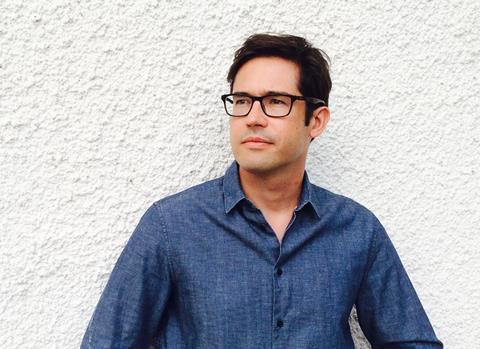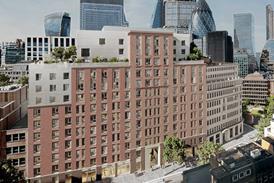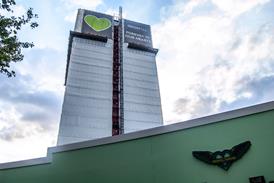30 years after the Highbury Initiative, the city still struggles with the legacy of its post-war planning and continued domination by the car

As the motor industry boomed after the Second World War Birmingham went all-out for an American-style gyratory road system. In a convulsion of civic self-harm, the Inner Ring Road was systematically ploughed through a mediaeval street plan and acres of robust Victorian urban fabric. The Luftwaffe couldn’t hold a candle to the furious destruction wrought by the city’s own planners.
The result was an urban design catastrophe almost unparalleled anywhere else in the UK. The city centre had been strangled by this urban motorway. As a pedestrian, if you wanted to walk anywhere beyond the small traffic-clogged core you had to navigate a hostile and confusing network of subways. The fringes of the city centre were characterised by empty plots of land, cleared to make way for the road but now blighted. Outside the ring road lay a wealth of characterful but forlorn industrial areas. Almost everywhere you looked you were confronted by the urban illiteracy of car-oriented civic planning at its worst.
Thirty years ago a concerted effort was made to address the problems created by the ring road and the wider planning blight it caused. The 1988 City Centre Challenge Symposium, or the Highbury Initiative as it became known, has taken on an almost legendary status in Birmingham planning lore. It was actually just one among many steps taken at the time to try and reverse the city’s long-term decline but it stands out for its ambition, and the way in which it came to represent a period of optimism and rapid change.
Today, nobody seems entirely sure whose idea it was, but Nicholas Falk of Urbed and John Worthington of DEGW appear to have been the key figures in organising the two-day “action planning” symposium. When I spoke to Falk recently and asked why Highbury had been so successful, he emphasised the mix of those who attended, which included local council officers and a diverse group of architects and urbanists, from the UK and further afield, including Tokyo and Chicago. He also makes reference to the political will for change, represented by the then leader of the council, Richard Knowles, who was a key player in driving the transformation that followed.
On the first day groups spent the morning exploring the fractured city centre, before reconvening at Joseph Chamberlain’s former home, Highbury Hall, to thrash out a vision. Falk and his fellow organisers then worked through the first night on a working paper with initial feedback from the walking groups. It was apparently Peter Rice who christened the ring road the “concrete collar”. This catchy put-down, accompanied by a passionate attack from Rice on the city’s deeply inhospitable pedestrian environment, seems to have captured the attention of the previously sceptical city engineer, Neville Borg, convincing him that a radical rethink was needed.
From Highbury flowed Don Hildrebrandt’s report on how to reduce the overbearing presence of cars and hostile roads. The city also commissioned Francis Tibbalds to produce the Birmingham Urban Design Strategy, which played a critical role in raising design standards and was influential on the development of projects like Brindleyplace.
Soon after Highbury, planning was also removed from the economic development function in the council and combined with architecture under a sympathetic new chief planner, Les Sparks, who pushed hard for quality urban design. Over the following years several steps were taken to “break the concrete collar”. Initially the main idea was to reintroduce at-grade pedestrian movement and restore vistas that had long been obscured by elevated roads. Smallbrook Queensway was lowered and trees planted in a not entirely successful attempt to turn it into a continental-style boulevard.
For a decade or so after the Highbury Initiative, the changes came so thick and fast that it seemed the city was on an unstoppable upward trajectory. More sections of the ring road were lowered and new pedestrian-friendly routes were created. A string of new or reinvigorated public spaces created a pedestrian route across the city that was not only legible but enjoyable. For the first time people were attracted into the city to walk for leisure and increasingly to live.
But three decades on from Highbury, Birmingham conveys a rather different energy. Progress to reverse the damage done by the Inner Ring Road seems to have stalled. Property prices are soaring and HS2 holds out the prospect of luring more economic overspill from the capital. But none of this seems to be reflected in the city’s architecture or public realm, which feels increasingly tawdry and bereft of any guiding vision.
A recent walk from New Street Station to “Eastside” (which will soon be the location of the new HS2 terminal) left me wondering how things had gone so badly wrong. The commitment to basic urban design seems to have been largely lost and, along much of the old ring road, cars once again seem to dominate the environment.
The route from New Street Station to Eastside currently takes pedestrians through a poorly lit traffic tunnel that leaves you wondering how far Birmingham has actually moved on from the bad old days. Once out on Moor Street Queensway, you’re faced by a massively over-engineered new surface-level double carriageway, terminating in an inexplicable frenzy of new gyratory traffic around the “Masshouse” development (masterplanned by Cullinan Studio).
Looking back towards the traffic tunnel and the Bullring, you’re confronted by the fortress-like mass of Benoy and Future Systems’ shopping centre. Apparently originally envisaged as another “tree-lined boulevard”, this stretch of road currently presents as bleak and disorientating an arrival point to the city as the old ring road ever did.
The reason I’d come this way was to see the new Royal Birmingham Conservatoire. But as I passed through a harsh and fragmented landscape, it felt like I was in a city light years away from that optimistic place of the early 1990s. Patel and Taylor’s Eastside City Park offers a brief respite from the unrelenting harshness of the surrounding vehicle-dominated environment. But this part of the city feels as if the architecture, roads and landscape are all in conflict with each other, and that as a result everyone involved has almost given up on creating coherent or welcoming cityscape. The apparent ignorance of basic urban design principles reinforces the sense of Highbury being a distant memory.
The already dismal Moor Street Queensway then leads on to the even more depressing Jennens Road (also known as the A47), where the city has chosen to locate one of its leading cultural institutions. When I finally reach Feilden Clegg Bradley’s conservatoire the most striking architectural quality is again the fortress-like visage that it presents to the windswept dual carriageway outside. What is presumably the building’s main entrance faces a desolate pavement and Aston University’s equally bleak campus opposite.
The facilities inside the conservatoire appear to be excellent, but it’s hard to avoid the conclusion that this whole area is an example of planning and urban design gone badly wrong. At the back of the conservatoire is a left-over public space so poorly designed that it almost appears a parody of bad urban design. This should be a vibrant linking space between Millennium Point and the adjacent Birmingham City University campus, but feels like it’s been designed to be as inhospitable and underwhelming as possible. Is this really what counts as “good enough” for Birmingham these days?
As I skirt back around Aston University along James Watt Queensway towards the top of Corporation Street, the spirit of the ring road seems very much alive. The junction between Aston University and Corporation Street is striking for the lack of any sense of this being an important arrival point. Somehow Birmingham still gives off an air of just tolerating pedestrians.
I later move on to “Paradise”, the new Glenn Howells-masterplanned commercial development that is replacing John Madin’s Central Library. While discussing Highbury with Nicholas Falk he talks proudly of its legacy, until coming to the recent demolition of the library which he describes as a “perfectly good building”. For me the loss of Madin’s library has left the city blander and strangely bereft of architectural excitement. It was perhaps Birmingham’s single most successful example of modernism’s heroic phase, with a powerful civic presence. Without it Birmingham feels a lesser place.
Most striking about “Paradise” from an urban design perspective is how little difference it seems to be making to the permeability of this part of the city. The moat-like Paradise Circus Queensway remains in place, as does the pedestrian bridge created in the early 1990s. The surrounding roads look as busy and unpassable as ever. The masterplan doesn’t suggest any significant new routes to the surrounding area.
One of Birmingham’s biggest problems historically has been its inability to invite or take advice from outside. It has a boosterish culture that doesn’t brook criticism. The Highbury Initiative stands out as a brief moment when a diverse group of outsiders, with an international perspective, were invited in to talk frankly and freely about the problems the city faces. Right now, it feels like a lot of the basic lessons have been forgotten.
The city could do worse than to dust off some old copies of the Hildebrandt report and the Birmingham Urban Design Study. It might inspire a new generation to rediscover some valuable insights from the recent past and approach afresh the unfinished job of “breaking the concrete collar”.
















2 Readers' comments